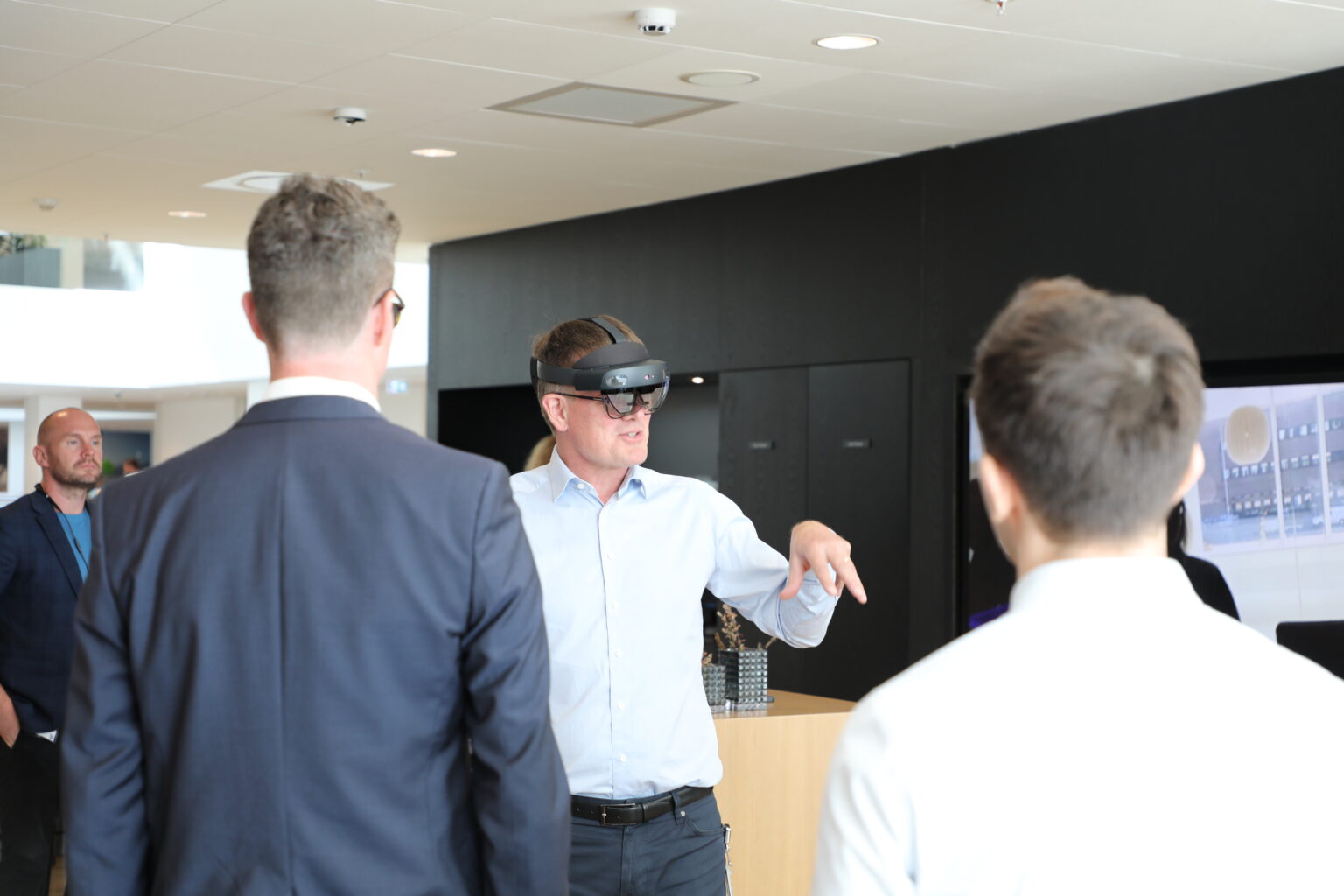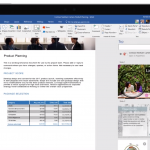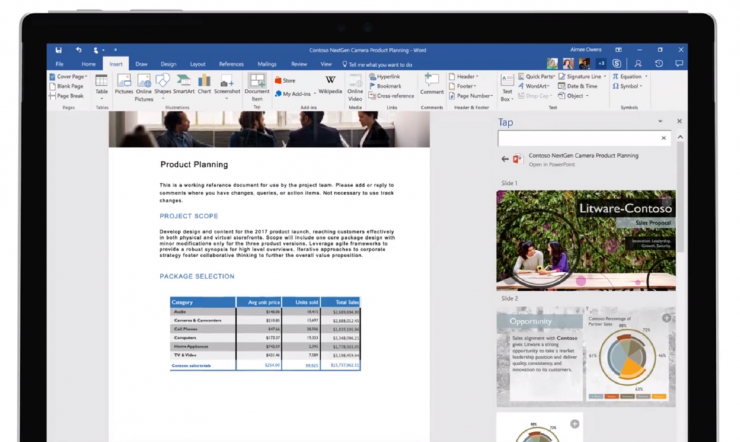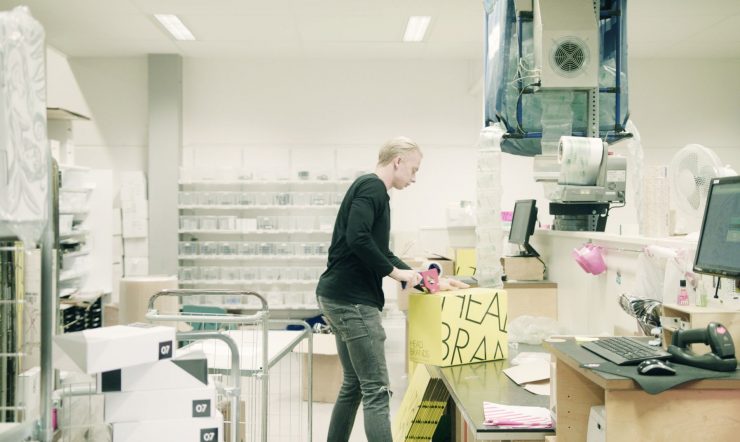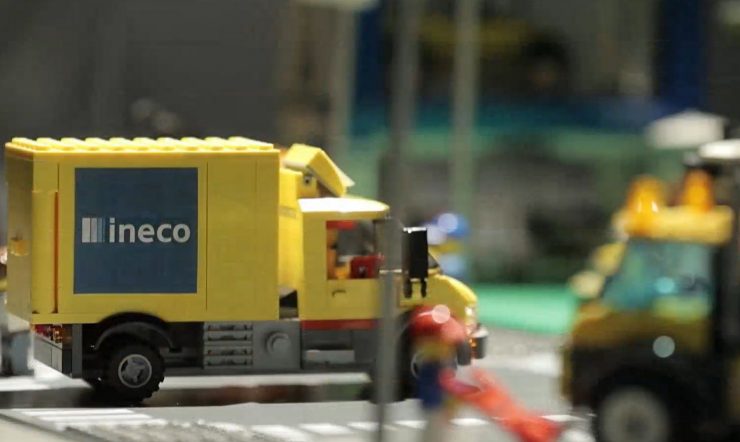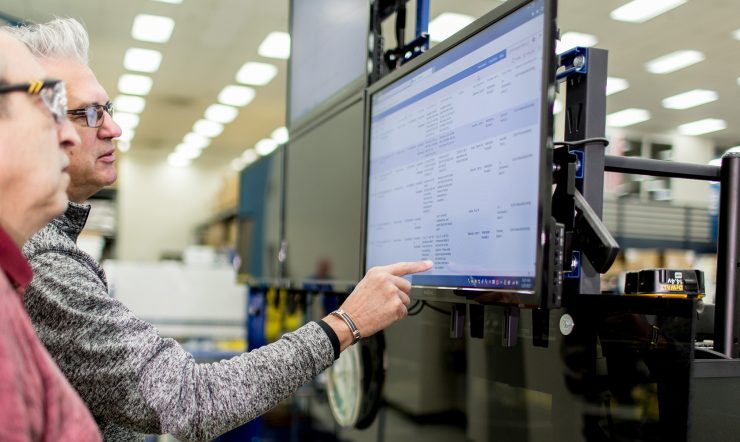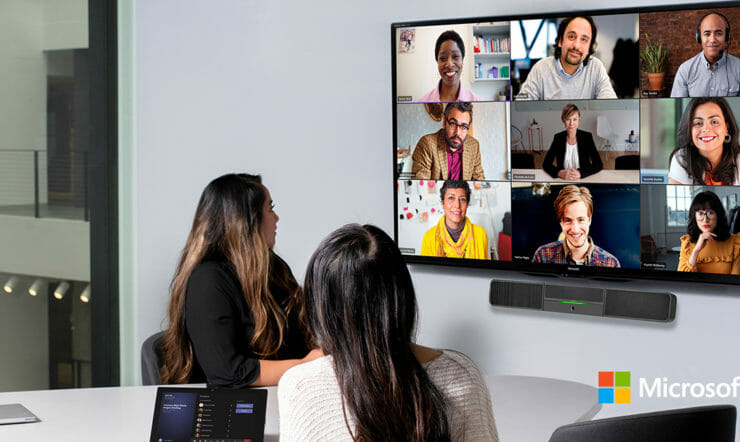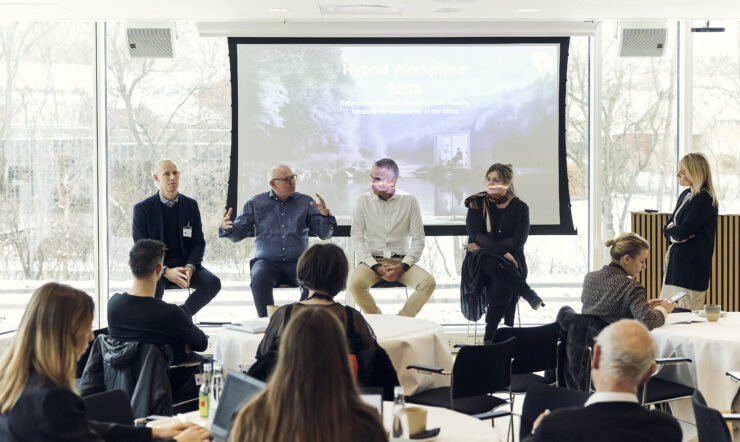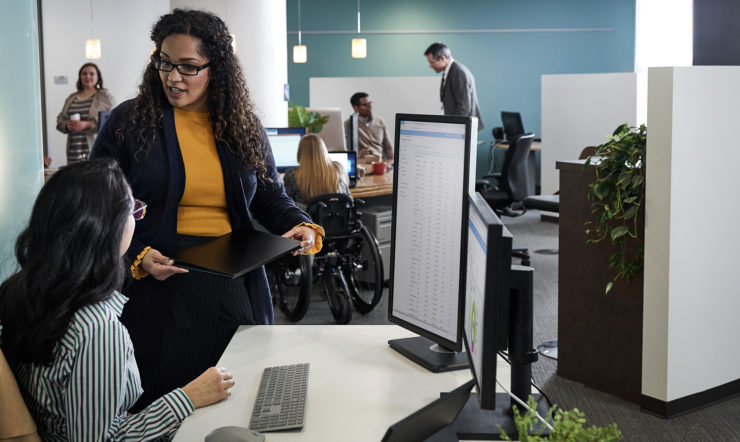Referring to frontline workers as the face of the business is nothing new. In this statement lies a recognition of this group of employees as fundamental in the pursuit of customer satisfaction. But a new survey highlights multiple threats to the satisfaction of frontline personnel. To scrutinize this business-critical challenge, we hosted an exclusive knowledge-sharing session with key partners in order to gather relevant insights into employee inclusion and how tech might assist.
In Microsoft’s Work Trend Index Report published earlier this year it became apparent that a certain part of organizations, in general, feel underprioritized and underserved, particularly by tech. Frontline workers represent 80 percent of the global workforce and are often referred to as the face of every organization. However, this data indicates that the face of the world’s organizations is starting to feel increasingly detached from the body.
For instance, 51 percent of frontline workers who do not hold management positions do not feel valued as employees. And 62 percent of frontline workers say that leadership does not prioritize building a culture in their organization altogether. This detachment poses a very real threat to businesses all around the world. But the challenge also presents an opportunity to unlock more of the potential inherent in more content, including frontline workforce. The question is: How? In an effort to answer this question, we invited representatives from key partner organizations to an exclusive roundtable discussion.
“Meeting the new demands and expectations from frontline workers is crucial if organizations wish to succeed as a more hybrid workplace. COVID-19 put the spotlight on frontline workers and their vital importance,” said Peter Skov, Director for Enterprise Commercial at Microsoft Denmark when he welcomed the representatives from organizations such as Arla, Novo Nordisk, and Jabra/GN. Peter Skov continued:
“It is clear that the frontline workers, the backbone of most organizations, have been underserved by tech. From our survey, we know that less than 25 percent of frontline personnel say that they have the right tools to do their job optimally. This constitutes a significant challenge,” Peter Skov concluded before giving the floor to Kit Ingwersen, Business Group Lead at Microsoft Denmark.

Kit Ingwersen, Business Group Lead at Microsoft Denmark.
“It’s not only about tech. It’s about culture!”
Ensuring that employees feel like they are part of an organization and not just an estranged island is critical with regard to employee retention. And businesses that highly depend on frontline workers have a significant challenge in this regard. The communication that is supposed to bind any company closer together and even define a significant part of the culture rarely reaches the frontline workers. In fact, 63 percent of all frontline workers say that management does not communicate effectively with them.
“Every organization works hard to bring talent onboard. So, it is difficult to understand why we apparently do so little in making such a big part of the organization feel included. It’s not just about technology. It is very much about culture. While this is a challenge it also puts us in a position to unleash new potential,” said Kit Ingwersen in her characterization of the frontline worker.
“If you feel disconnected from your company you feel less compelled to go to work. If I don’t see my leadership team setting a certain direction and I don’t understand why we do what we do I lose my sense of belonging. Many frontline workers do not feel that leadership prioritizes building a culture for them. And not prioritizing culture means not prioritizing people,” said Kit Ingwersen.
Reconnecting a part of an organization that feels detached from the core purpose of the organization means strengthening communication and it means ensuring that the detached part of the company is properly served by tech. But in order to serve frontline workers properly, it is crucial to understand their concrete needs, their tasks, and the culture in which they do their job. Having tech shipped to the frontline without any proper motivation from management will rarely work out. According to Kit Ingwersen, this is not because they are afraid of technological progress as many might think. It is because they are busy.
“So, how do we train busy people that need to use the tech? If leadership isn’t there, explaining why we do what we do then, if employees do not understand the need, they will carry on doing their job. Not because they are reluctant to change. But because they are reluctant to slow down and change tracks with the risk of them completing their tasks at a slower pace. A common misconception is that employees are afraid of tech and afraid of being replaced by tech. That is not the case any longer.”
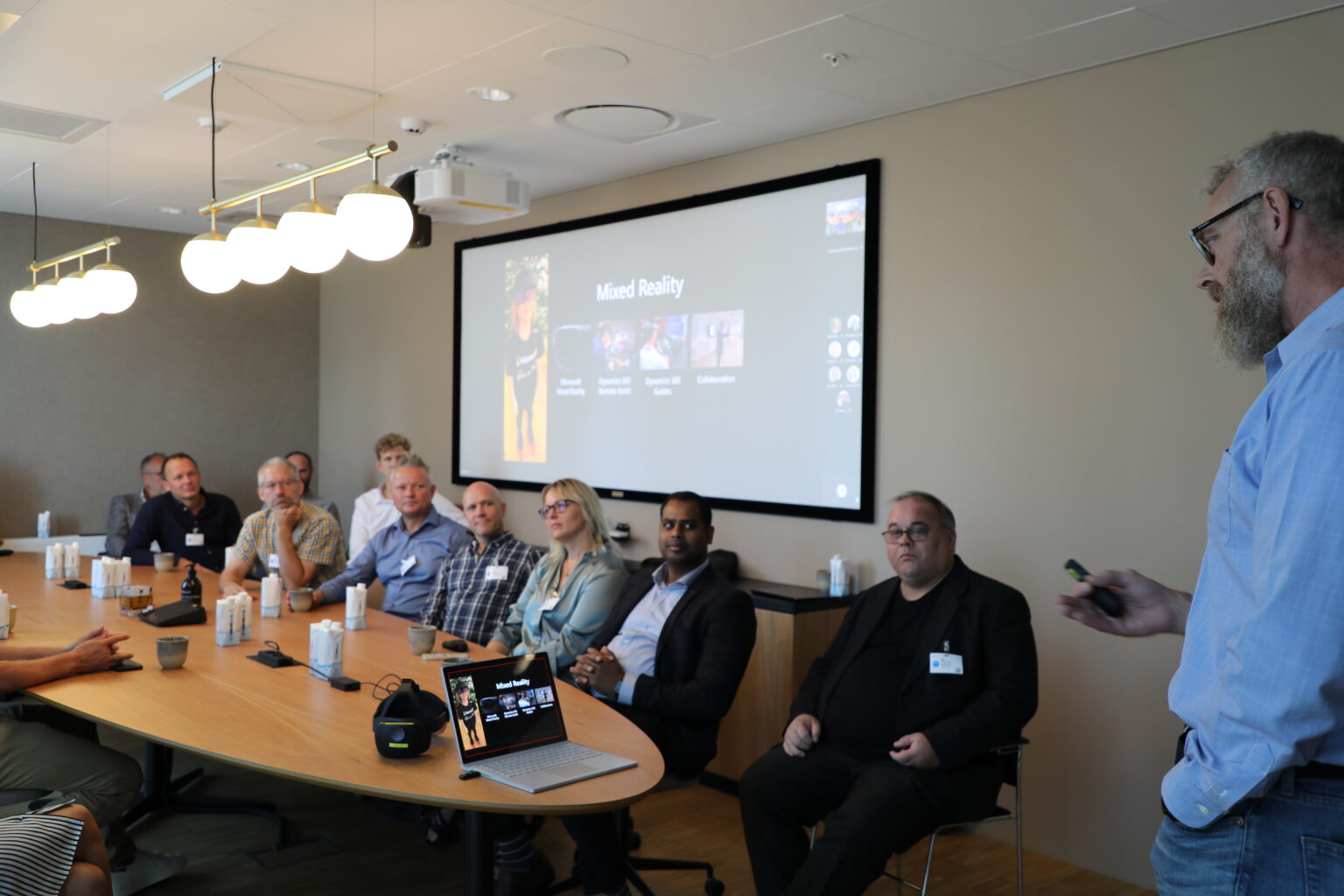
Ken Hyld, Lead Technology Architect at Microsoft Denmark.
The Link Between the Frontline and the Bottom Line Must Not Go Unnoticed
Kit Ingwersen’s statement is backed by data in the Work Trend Index. In the survey results, 63 percent of frontline workers are in fact excited by the opportunities created by tech. This indicates that the understanding is that a tech is more a helpful tool than a harmful threat. Even so, the implementation of new frontline tech solutions remains a delicate exercise according to Kit Ingwersen:
“All employees need management to get up on a beer crate and explain, with passion, why change is necessary and how it will benefit the individual’s ways of working. The question is where do we start? It is all about making sure the employees are heard. We need to make the given change an intuitive experience that they want to be a part of. We need to create the best terms for positive experiences for the employee in order to ensure ownership,” said Kit Ingwersen before opening up for a broader discussion.
The participants agreed with Kit Ingwersen’s points. One representative acknowledged that culture as a barrier was underestimated – especially when rolling out tech solutions internationally. Establishing ownership as locally as possible, as close to the end-user as possible, is fundamental, said another participant before elaborating that in his experience there must be a clear prioritization all the way through the company – from the very top to the floor. Or else the technology might be left untouched, he concluded.
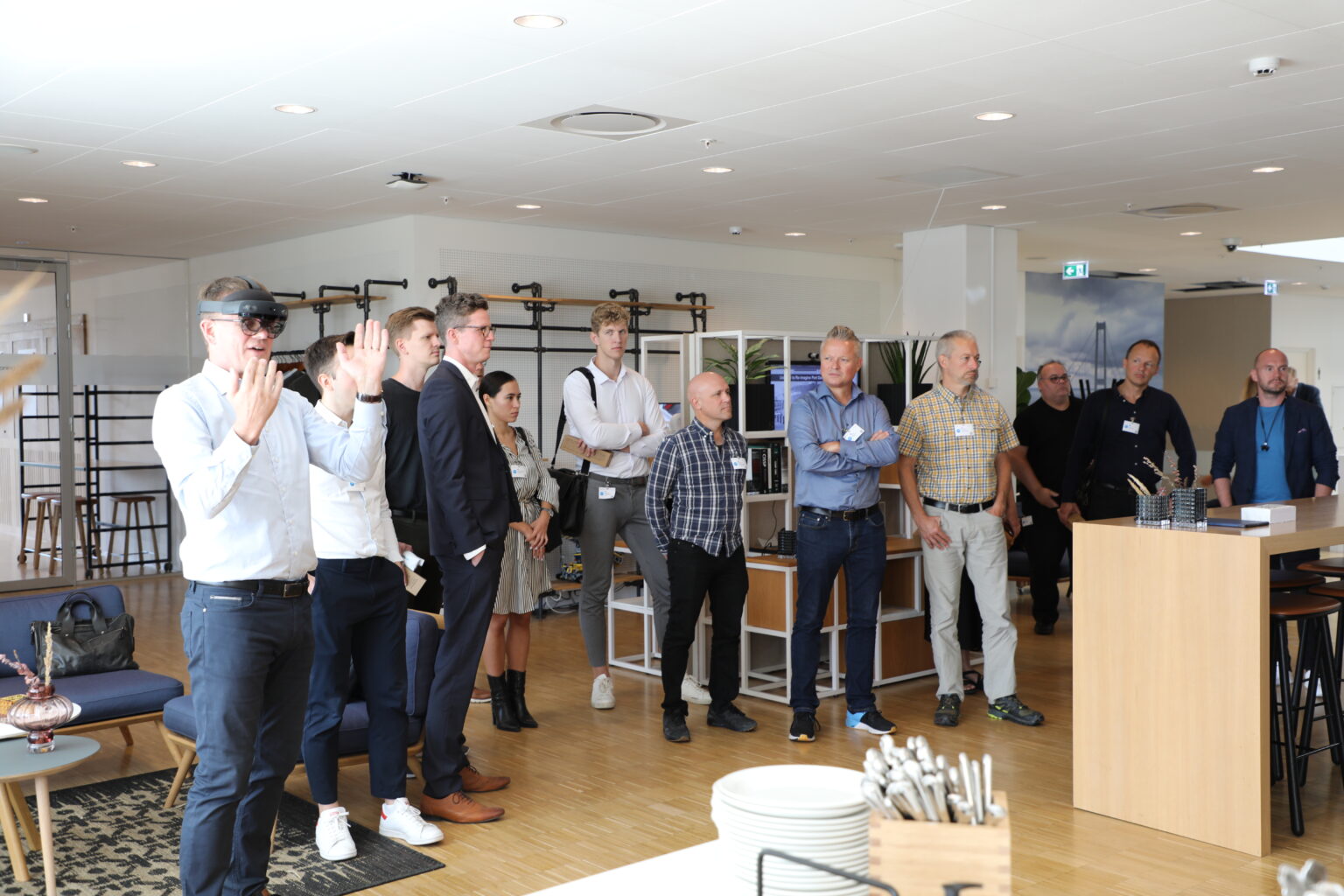
Blending the Physical and the Digital World
Following a thorough demonstration of the HoloLens and how mixed reality can strengthen core business by Ken Hyld, Lead Technology Architect at Microsoft Denmark, the floor was given to a representative from Novo Nordisk and Advanced Digital Business Consultant within Extended Reality, Francois Schumer. Francois Schumer demonstrated how Novo Nordisk uses Microsoft technology, including the HoloLens, to increase and optimize collaboration between on-site and off-site workers.
To Novo Nordisk, the new technology, especially the HoloLens, is reportedly beneficial in four distinct ways. Firstly, flexibility. Novo Nordisk is implementing onboarding a lot faster with augmented instruction. Secondly, they are able to increase employee confidence in the task at hand and reduce the perceived complexity for each colleague. Thirdly, ensuring consistency in Novo Nordisk’s production straight away is critical, Mr. Schumer stated. Tech such as the HoloLens helps guarantee uniformity in the quality Novo Nordisk delivers.
Lastly, Mr. Schumer highlighted more engaging instruction as key. More intuitive assistance means more engaged employees – anytime an employee has a question they simply connect with a colleague remotely and solve the given issue together. In conclusion, Francois Schumer explained how Novo Nordisk has not only managed to bring the solution closer to the problem through tech, but the pharmaceutical company has also brought colleagues closer to each other.
Frontline is Family: Safety First and Last
Presenting at the roundtable as the second case company was Jabra/GN represented by Business Development Director, Jesper Tørnkvist. Mr. Tørnkvist added a point to the conversation that had been overlooked by the participants. He put the spotlight on how tech can improve security – especially when working in a remote location and maybe during late hours:
“I have a son,” he said, “who at one point worked at a gas station. Late one night, my son was alone, and a person pulled up to the gas station and started stealing petrol. My son had to use an old-fashioned phone to call his manager – who then did not reply. So having someone on a push-to-talk distance where you just push one button, and someone will be there to help or guide you, can provide the sense of safety that remote workers deserve,” said Mr. Tørnkvist while also highlighting the need for establishing communities for frontline workers mentioning Teams Walkie Talkie as a part of the solution.
An organization where everyone from board members to frontline workers feel included is not only the foundation of strong company culture – it is also about safety. Whether you are a healthcare worker during COVID or a gas station attendant at night, feeling both included and safe means feeling prioritized. And a central part of this prioritization is tech.
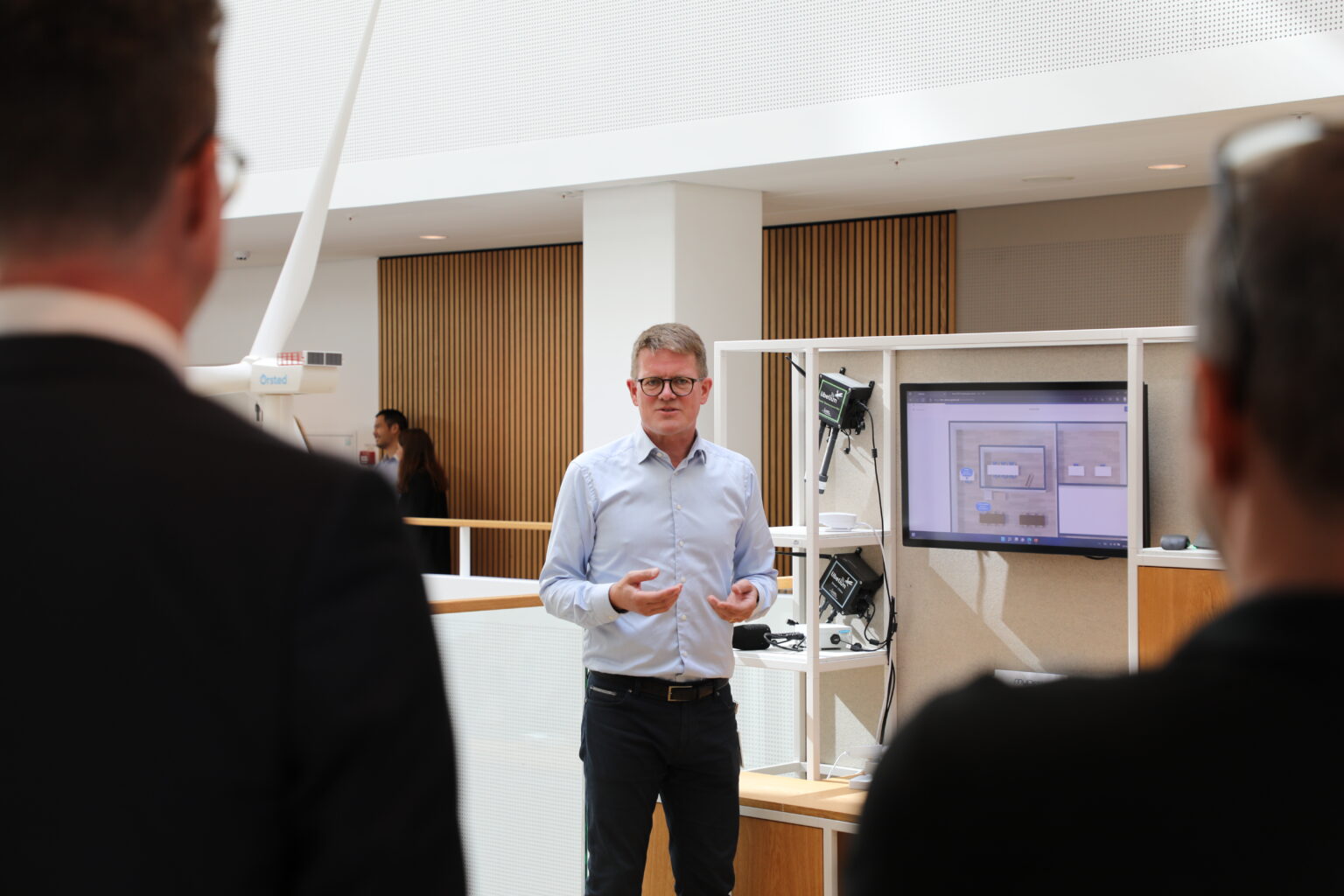
Peter Lunding Smith, Senior Technology Architect at Microsoft Denmark.


